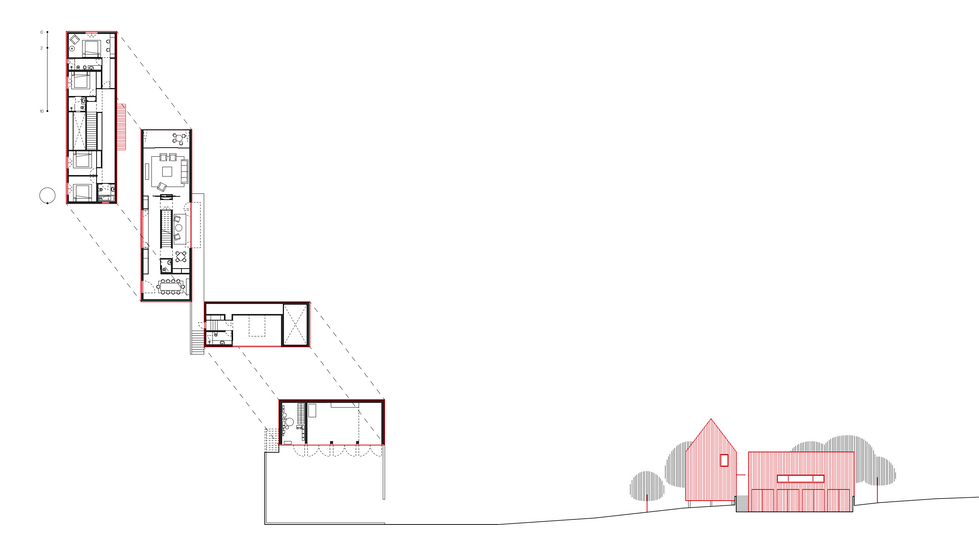
House 3000
REBELO DE ANDRADE
Herdade da Considerada is a tract of arid land with 500 hectares, about seven kilometres from Alcácer do Sal, dotted with cork oaks and umbrella pines.
赫爾達德·達·馬卡達達(Herdade da Thoughtada)是一塊佔地500公頃的干旱土地,距Alcácerdo Sal約7公里,上面佈滿了軟木橡樹和雨傘松樹。
The resulting landscape is uniform in every direction and, as the architect Luís Rebelo de Andrade found on a preliminary visit, it is easier to lose your car at Herdade da Considerada than in a supermarket carpark.
由此產生的景觀在各個方向都是統一的,正如建築師LuísRebelo de Andrade在初步訪問中發現的那樣,在Herdade da Thoughtada丟失車要比在超級市場停車位容易。

This experience led to a key idea that informed the entire project: in the absence of geodesic markers – which nature did not offer Herdade da Considerada – it is architecture that takes the place of the reference points that from time immemorial has guided man, complementing the landscape with a building that is overwhelmingly visible. The house itself and the farm building were designed to minimise building times and costs and to privilege energy sustainability.
這種經歷導致了一個關鍵思想,使整個項目受益:在沒有大地測量標記的情況下(大自然並沒有提供此功能),是建築取代了遠古時代指引人類的參考點,從而補充了景觀與可見的建築物。

The solar panels and thermal collectors produce more energy than the house consumes, for this house is averse to energy wastage.
房屋本身和農舍的設計旨在最大程度地減少建造時間和成本,並優先考慮能源可持續性。太陽能電池板和集熱器產生的能量多於房屋消耗的能量,因為該房屋避免能源浪費。


With its gable roof, doors and windows, the exterior design of the house seems as childlike as the drawings children produce even before primary school. This apparent simplicity is actually based on the collective and romantic imagery we all share: the house on the prairie, the life of the pioneers and settlers of the American Far West, so often depicted in westerns and which live on in our constitutive memory, in spite of the time and of the intentional awareness we might have about them.

憑藉其山牆屋頂,門和窗戶,房屋的外部設計看起來就像孩子們甚至在上小學之前所繪製的圖畫一樣童趣。這種表面上的樸素實際上是基於我們大家共享的集體和浪漫意象:草原上的房子,美國遠西地區先驅者和定居者的生活,在西方經常被描繪,並在我們的本構記憶中生活,儘管有時間和我們可能對它們有意識的了解。
專案圖紙


Project Information
Project Name: House 3000
Location: PORTUGAL
Architect Office: REBELO DE ANDRADE
Area: 400m²
Completion Year:2018
Photographer: João Guimarães - JG Photography, Carlos Cezanne, Tiago Rebelo de Andrade
Rebelo de Andrade Studio, is an award winning design practice with its main office in Lisbon, Portugal.
The practice works internationally on cultural, commercial, hotels and residential projects providing
master planning, architecture, interior design and product design services
[TEAM20 Life 現長期徵稿]
如果你對建築設計有興趣、樂於分享內容,歡迎投稿給我們,並附上 300 字內的個人簡介與近照一張。文章若經採用將由 TEAM20 Life 編排,也會開設你的個人專欄喔!
投稿信箱:team20.xyz@gmail.com









